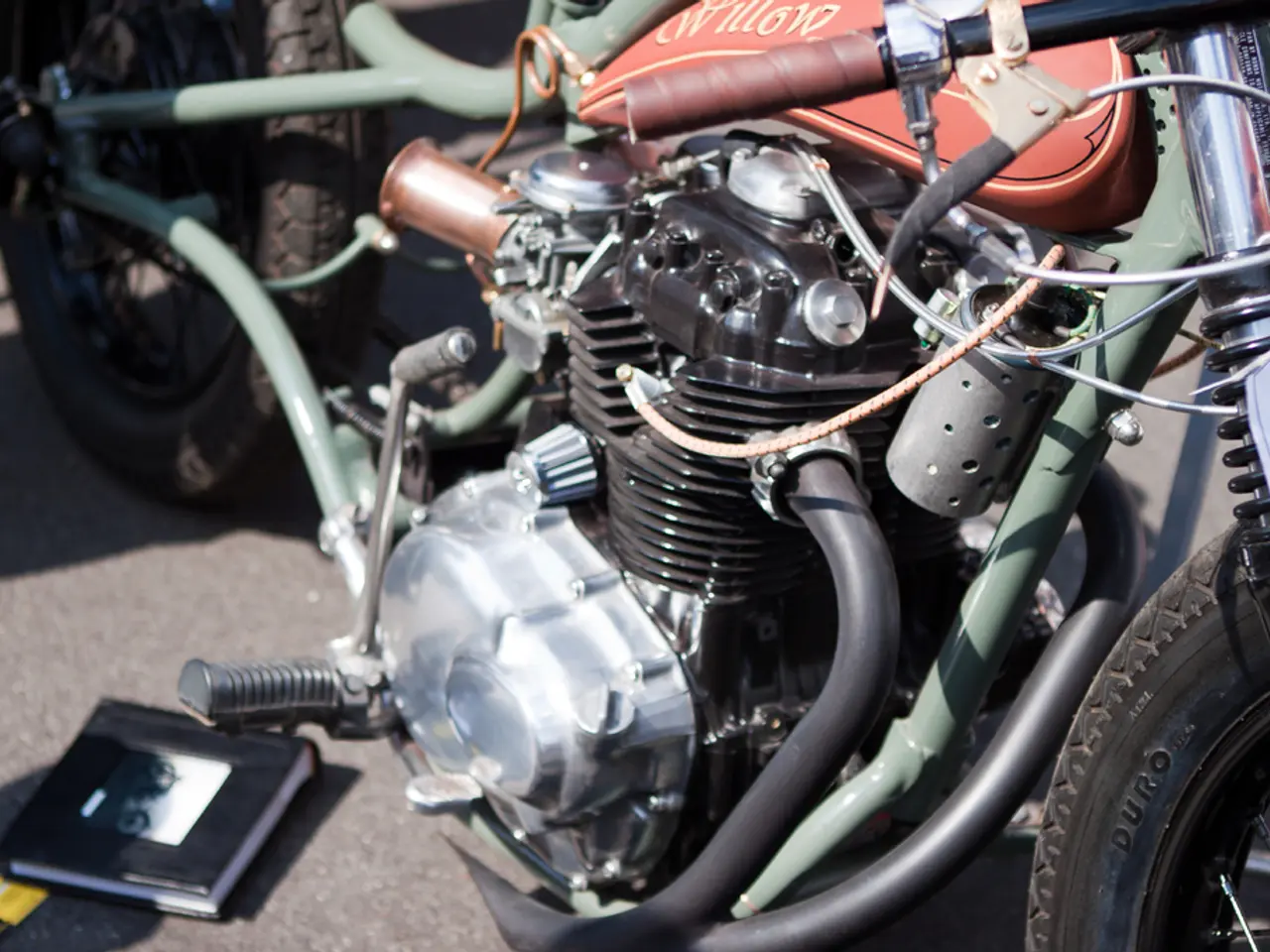Battle Between Triumph Scrambler 400 XC and Royal Enfield Himalayan 450: Which adventure motorcycle fits your preference?
**Triumph Scrambler 400 XC vs Royal Enfield Himalayan 450: A Comparison of Off-Road Capabilities and Features**
In the world of adventure bikes, two models have recently caught the attention of enthusiasts: the Triumph Scrambler 400 XC and the Royal Enfield Himalayan 450. Both bikes are designed for off-road adventures, but they cater to different riding styles and preferences.
The Triumph Scrambler 400 XC, with its 398cc TR-Series liquid-cooled Single engine, produces 39.5 hp and 27.7 lb-ft of torque. It boasts side-laced spoked wheels with lightweight aluminum rims and tubeless Metzeler Karoo Street tires, offering a stable ride on various terrains. The bike also features an aluminum sump guard, engine bars, and a color-matched front fender, all contributing to its rugged design.
The Scrambler 400 XC is equipped with a 43mm inverted fork and a preload-adjustable monoshock, offering 5.9 inches of travel. For safety, it comes with dual-channel ABS with switchable traction control and an off-road ABS mode. Weighing 190 kg and with a 13-liter fuel tank, the Scrambler 400 XC offers a balance between performance and practicality, with a starting price of $6,695.
On the other hand, the Royal Enfield Himalayan 450, while not yet fully detailed, is expected to follow in the footsteps of its predecessors, focusing on off-road capability and rugged design. The Himalayan 450 is rumoured to have a 452 cc engine that produces the same 40 horsepower but with 40 Nm torque at 5,500 rpm.
The Himalayan series is known for its prowess in off-road environments, often featuring long-travel suspension and robust design elements. It is expected that the Himalayan 450 would offer more focused off-road capabilities due to its design heritage.
In terms of engine performance, the Scrambler 400 XC offers a lightweight and agile ride with a powerful single-cylinder engine. The Himalayan 450, with its focus on durability and low-end torque for off-road use, might provide a different riding experience.
Both bikes would likely feature suspension systems designed for off-road use, but the Himalayan series is often noted for its high ground clearance and longer suspension travel, which can be advantageous in challenging terrain.
When it comes to weight and handling, the Scrambler 400 XC is lighter and might offer better handling on paved roads and lighter off-road trails. The Himalayan 450 might be heavier but could provide more stability at higher speeds or in more rugged conditions.
In summary, while the Triumph Scrambler 400 XC offers enhanced off-road styling and some features, the Royal Enfield Himalayan 450 is likely built for more serious off-road enthusiasts, with a focus on durability and capability. The exact specifications of the Himalayan 450 are yet to be revealed, so this comparison is based on historical trends and general expectations.
The Triumph Scrambler 400 XC is designed for various off-road terrains with its powerful single-cylinder engine and lightweight construction, providing a stable and agile ride.
The Royal Enfield Himalayan 450, focusing on durability and off-road capability, promises a different riding experience with its rumored strong engine and robust design, potentially catering to more serious off-road adventurers.








